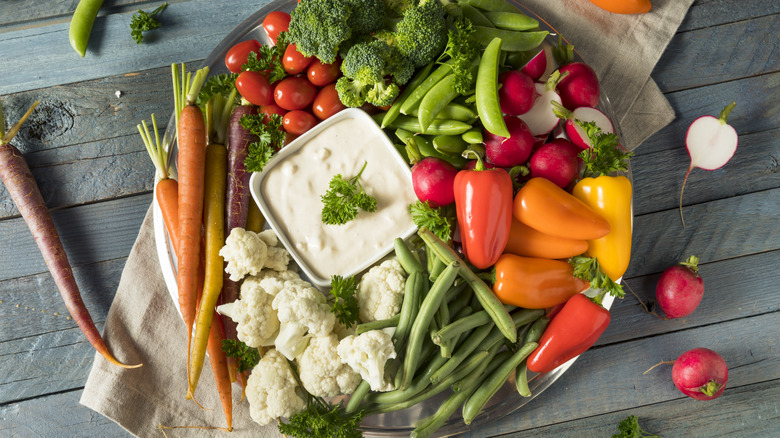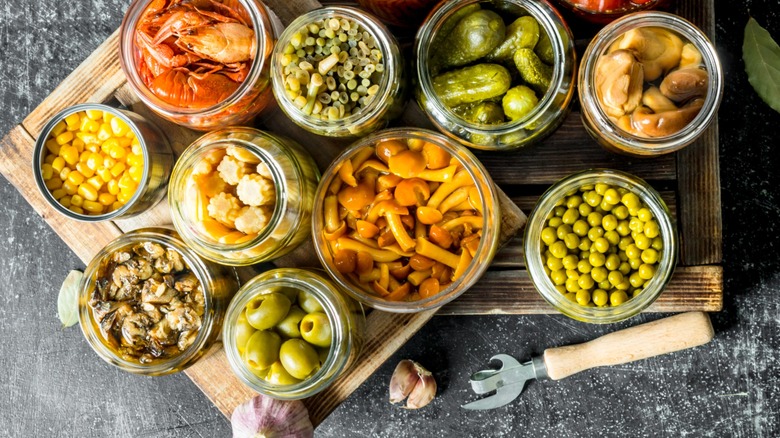The Actual Difference Between A Relish Tray And A Crudités Platter
Relish trays, crudités, cheese boards, and charcuterie can all feel like different shades of the same hors d'oeuvre color. And while they are all variations on the theme of snacking, each has its own specific item requirements to bear its name. For relish trays and crudités, the defining difference is in the pickling of the vegetables.
To pickle or not to pickle — that is the question. Starting with the simpler of the two, crudités is the fancy French term for a vegetable tray, specifically one featuring raw vegetables. Celery, carrots, sliced bell peppers, and cucumbers all make excellent additions to a crudités platter, best served with dips like hummus or whipped feta if you're feeling indulgent. You could also take a page from Giada De Laurentiis' playbook by preparing a crudo with fresh zucchini and lemon zest for a more elevated approach to crudités. Fruit, olives, and other marinated items add a nice breadth of flavor options, too, but the more marinated or pickled items you include, the closer you move from crudités to a relish tray.
Relish the flavor and history of pickling vegetables
The unequivocal necessity for a relish tray is pickled items. Cornichons, pickled corn on the cob, pickled okra, and pickled beets all make great starting points when building your tray. While there is some overlap between crudités and relish trays — both featuring fresh vegetables and dips — the preference for pickled over raw vegetables is what defines a relish tray. Think of it as the center of a vegetable Venn diagram, primed to whet your appetite, feeling more akin to an Italian antipasto but without the cheese and cured meats. For a fun twist, try adding pickled peaches or other summer fruits to your next relish tray.
Relish trays have long been a tradition at supper clubs, serving as the opening act to the meal. However, their origins may not be what you expect. The earliest iterations of pickled vegetables at dinner parties started with the humble celery. A 19th-century dinner party wouldn't have been worth writing about if it didn't feature coveted and expensive produce decorating the table. Ornamental food displays were all the rage in Jane Austen and E.M. Forster novels. Wealthy hosts and hostesses — both in novels and in real life — would show off their staff's pickling skills by displaying pickled celery in ornamental jars.
Thinking of serving up one of these snackable options at your own supper club? A good rule of thumb for snack boards is to follow the charcuterie portioning guideline: three ounces per guest.


